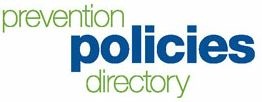World No Tobacco Day
The Partnership's Prevention Policies Directory supports tobacco control and chronic disease prevention efforts
May 28, 2012
 On May 31, the World Health Organization is marking World No Tobacco Day by bringing attention to the importance of tobacco control in combating the nearly 6 million tobacco-related deaths estimated worldwide each year.[1]
On May 31, the World Health Organization is marking World No Tobacco Day by bringing attention to the importance of tobacco control in combating the nearly 6 million tobacco-related deaths estimated worldwide each year.[1]
Recognizing the pivotal role that tobacco control plays in preventing many types of cancer and other chronic diseases, the Canadian Partnership Against Cancer supports Canadian tobacco control efforts through a unique online resource — the Prevention Policies Directory.
The Directory brings together cancer and chronic disease prevention policies from hundreds of Canadian sources in a searchable online tool. It was created to support public health professionals, academic researchers, and policy specialists as they work to create healthier communities through policy change, for example by developing policies that limit exposure to second-hand smoke in public places.
“When a policy need is identified, the first questions are often “What policies are already out there? Where do we start?”” says Deb Keen, Director of Primary Prevention for the Partnership. “The Prevention Policies Directory aims to kick-start this process by bringing relevant information together in one easily accessible resource.”
Dr. Candace Nykiforuk, a health promotion researcher in the University of Alberta’s School of Public Health, considers the Prevention Policies Directory an extremely valuable resource supporting the development of new tobacco control policies.
“When we look at tobacco control, a great deal of progress has been made in some areas — such as making workplaces smoke-free,” says Nykiforuk. “Policies are still needed for smoking in other environments such as beaches, parks and patios. Policies relating to taxation of tobacco products as well as packaging and displays are in development as well. The Prevention Policies Directory supports this work by enabling efficient knowledge transfer between jurisdictions and thereby speeds up the diffusion of best-practices and innovation.”
“The directory has supported my team’s ability to stay informed about how tobacco control policies are being developed and implemented across the country. It is an important and trustworthy source of information that we can rely on to help us carry out meaningful research that can provide useful evidence for practitioners and decision-makers.”
While tobacco control content is an important focus, the Directory also includes Canadian policies — including legislation, regulations, and codes — relating to the other key modifiable risk factors for cancer and related chronic diseases including: nutrition, physical activity, the built environment, alcohol consumption, infectious agents, environmental and occupational exposures, and UV/ionizing radiation.
This growing resource currently brings together more than 1,100 documents from nearly 300 sources and is available through the Partnership’s cancer control portal, cancerview.ca. Municipal policies are a new component of the database with 31 communities, including jurisdictions in every province and territory, now being added.
Before being included, each of the documents undergoes a review process to ensure that it is relevant to prevention of cancer or chronic diseases in Canada and closely related to the key risk factors tracked in the Directory. The Directory is bilingual and summaries have been prepared in French or English for documents that are only available from their original source in one language.
Users can keep up to date with changes to the Directory, and news related to prevention policies, by following the Prevention Policies Directory’s tweets. The Directory will also be featured at the Canadian Public Health Association conference in Edmonton, June 11-14, and at the World Cancer Congress in Montreal, August 27-30, as part of a showcase on web-based tools for policy change.
Notes
[1] WHO Global Report: Mortality Attributable to Tobacco, World Health Organization, 2012, page 3.
